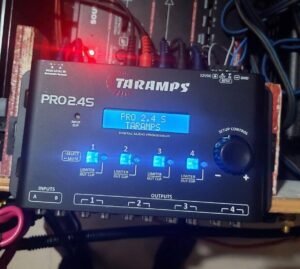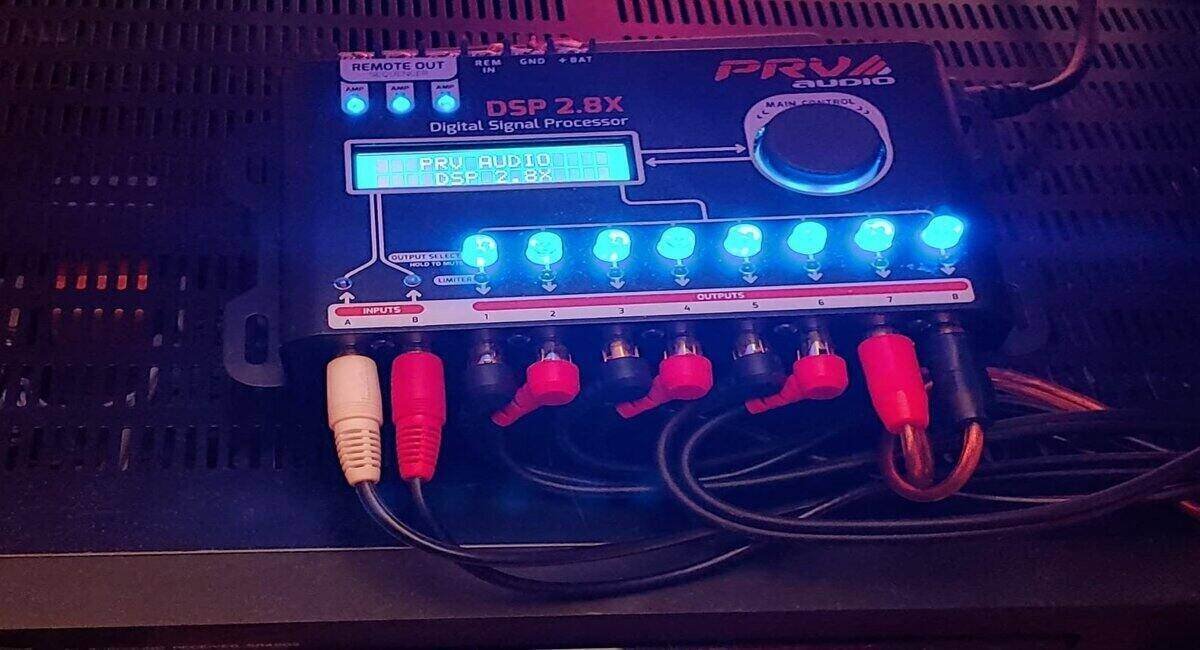The Digital Signal Processor (DSP) tuning can take your present car audio experience to a new level. All you have to do is to set a tune for your audio system in the car using a laptop or mobile application. Most of the cases, any brand of DSP comes with their dedicated software for tuning the DSP. Yet, those DSP tuning softwares always look different to each other for anyone who never uses those softwares. So if we have the idea about the basic attributes of the softwares, any DSP software will start to make sense to you no matter how different their interface is!
So here we are to introduce you with the DSP tuning terms and recommend the accurate DSP settings suit for you. So stay focused here.
Contents
Measurements to Take Before DSP Tuning
Before we are going to start using DSP in car audio and tuning through software, first make sure your car is connected with any kind of power supply , because for tuning the DSP, the vehicle must turn on without running the engine. Also if any automatic light turns on or AC, just make sure to turn them off because tuning may take a bit of time and you should not waste battery power.
Furthermore, make sure all the audio settings are flat, which means make the value zero. After ensuring these, now you are ready to go.
Microphone Stand Setup
The DSP tuning microphone is an important part for measuring the distances. It helps to measure distance from the driver to speakers, tweeters and subwoofers. Here, the microphone stand is being used as a replacement for the driver. So keep the driving seat exactly like the driver keep it and keep the mic holder at the height of driver’s ear level.The microphone stand’s height seems important because if you do this measurement for a 5 feet 3 inch guy and but the driver is taller more than 6 feet, then definitely, the driver will have different effect on how it the system sounds.
Measuring the Distance of Speakers from the Vehicle Driver
For measuring the distance between the driver’s ear to the speakers, tweeters and sub, get a measuring tape. Now measure the distance of the central point of the front speaker to the tip of the microphone in inches. So do the measurement of each speaker’s distance to the tip of the microphone and note them down. Also take the distance measurements of the subwoofer from the tip of the microphone stand.
Measuring the Speakers Delay
There are few websites for calculating the speakers delay time, we are doing it by tracerite.com. It’s time to put the measurements you noted down already. You may wonder why these measurements are related to car audio DSP tuning guide, well to input values in software, you need these measurements.
You can see there are options for 2 way or 3-way speaker systems, but we are using 3 way here. Here we have put down our measurement in inches for the Left and right tweeters, mid bass and sub at the back. Now click on the calculate option.
Here you can see the delay has come for the left side tweeter, mid, mid bass and the sub at the back. Now you have got delay measurements in milliseconds.
Car Audio DSP Tuning Guide: A Step-by-Step Tuning Guide for Your Car
You already know, different DSP brands have different DSP tuning apps or software. We are going to show here the tuning process of Alpine DSP 850X as it is one of the top selling DSP car audio. This software has a user-friendly interface, so if you can learn it, it may be easier for you to operate other tough to get DSP software.

Open the Software and Put the Speakers Delay Value
Look for the place where you can put the speaker’s delay sound value. For this alpine, you will find it at the bottom left corner. Click there and enter the values.
Here you can see the red marked boxes where we have put the values and they have changed a bit. Don’t get too worried about it. Also there are no values for rear speakers. But you can measure the rear speaker delay time the same way we have instructed you for front speakers. Now close the window.
After closing the window, click any of the channels to the left side of the software and you will see the delay setting has been successfully done.
Save A Preset
It’s important to save after every change you make with this software. Because if you change your factory unit or wanna change something, surely you won’t want to start it from scratch again. Also you can use different presets for different purposes. Like one preset can have more domination of higher frequency sounds and you can use another preset for a bass dominating sound system.
Playing Pink Noise
It’s not hard to play a pink noise into your car audio sound system. So play a mono pink noise using Bluetooth or cable connected to your phone or laptop, it helps to tune the sound. Also ensure the factory or aftermarket head unit is connected with your laptop and software showing it is successfully connected with the head unit.
If you don’t hear any sound try to volume up using the software.
Turn on/off the Channels to Set HPF & LPF
It’s time to set the High Pass Filter and Low pass Filter for your speakers and subwoofers. If you have a 3-way sound system in the car, it’s better to start in the middle, just like we have muted all the connected tweeters, and subwoofers and just the right mid is not muted.
For a 2-way sound system, like if you have tweeters and subwoofers, it is better to start with the subwoofer first. Most of the time, people set tweeter’s HPF 5,000 Hz with 12 0r 24 db slope, for mid, they set LPF at 80 Hz and HPF at 5,000 Hz with either 12 dB or 24 dB. Finally for subwoofers, the Maximum LPF is 80 Hz with 12 or 24 dB slope. You can change the Hz and dB slope from the bottom of the software. Any crossover between the frequencies will create distortion or sometimes damage the tweeters, subwoofers etc.
FAQ
1. What does DSP do for Car Audio?
– DSP allows car owners to control the sound system in their way and they can add subwoofers or speakers any time, and DSP will allow necessary changes for speaker, tweeter and subwoofer. Overall it provides a better sound experience if you can tune perfectly.
2. Does DSP allow Summing Signals?
– Summing for a Soundsystem means combining multiple input signals like signals for tweeter, mid tot a main output channel. So by summing these two outputs you can have a full range output signal. DSP helps to sum the signals.
Conclusion
Tuning a car audio DSP seems so overwhelming when you first see the tuning software. But this basic car audio DSP tuning guide is going to help you to understand the basics of every interface of the various DSP software. They even come with some other features in the app or software, yet those features don’t make huge differences. The ones make huge differences, we already have discussed here. Hopefully next time, you won’t yawn looking at DSP tuning software.

